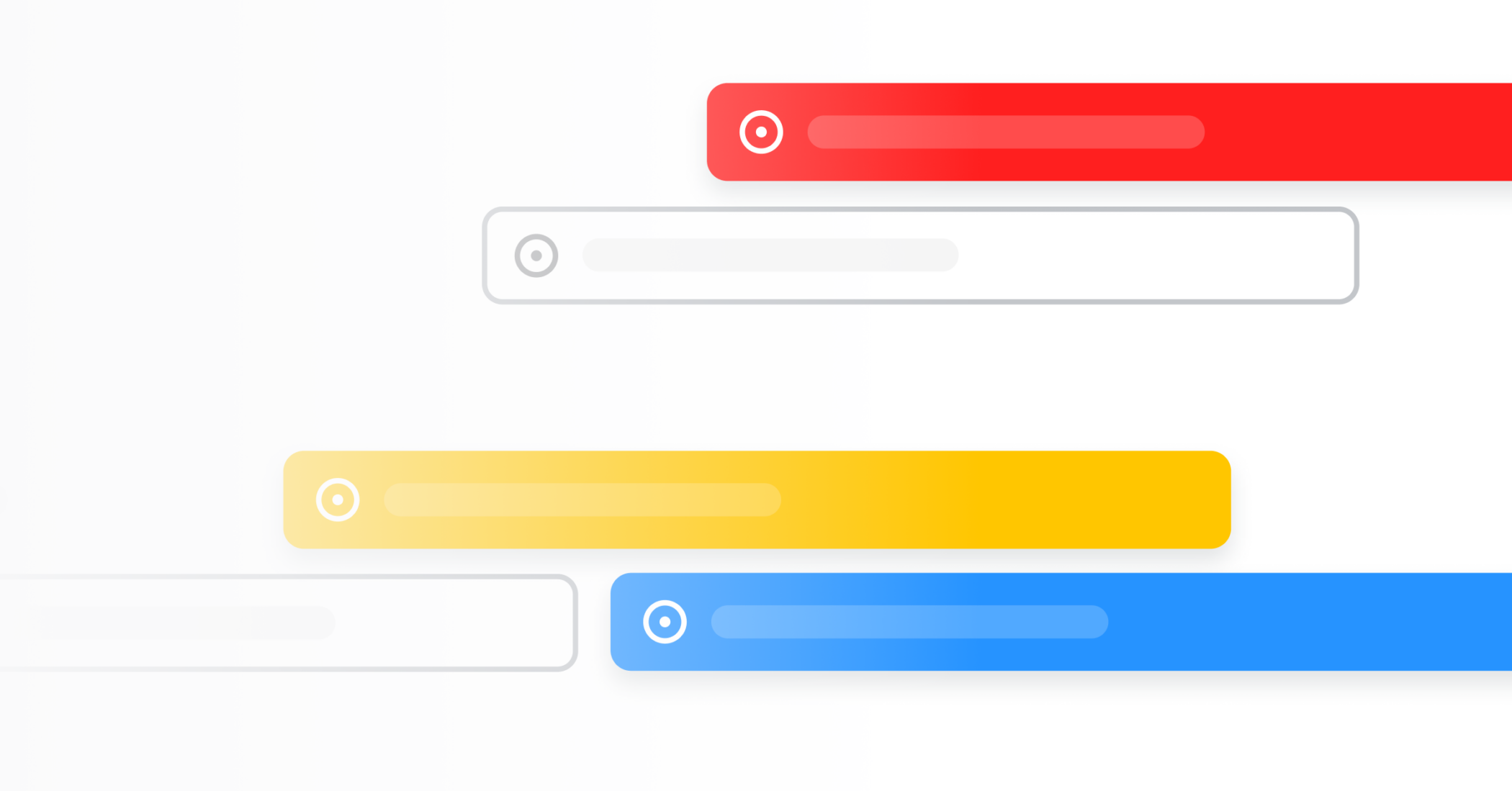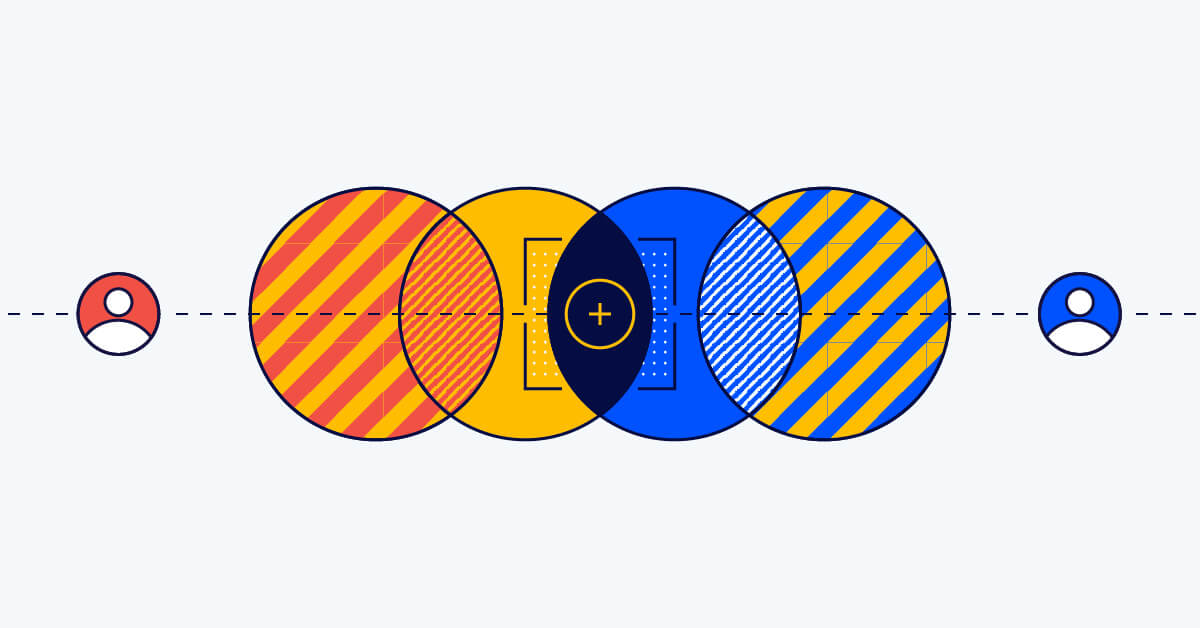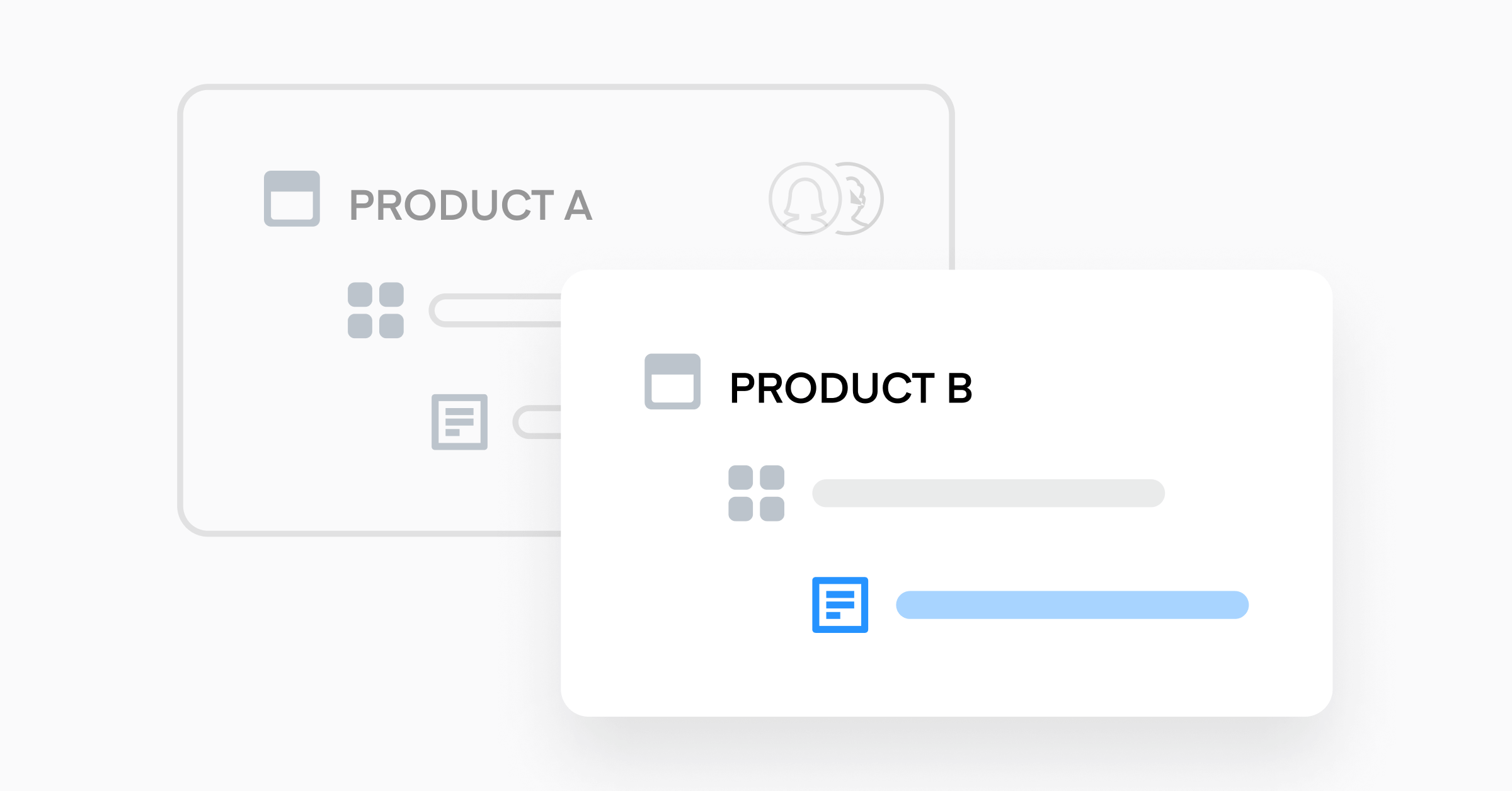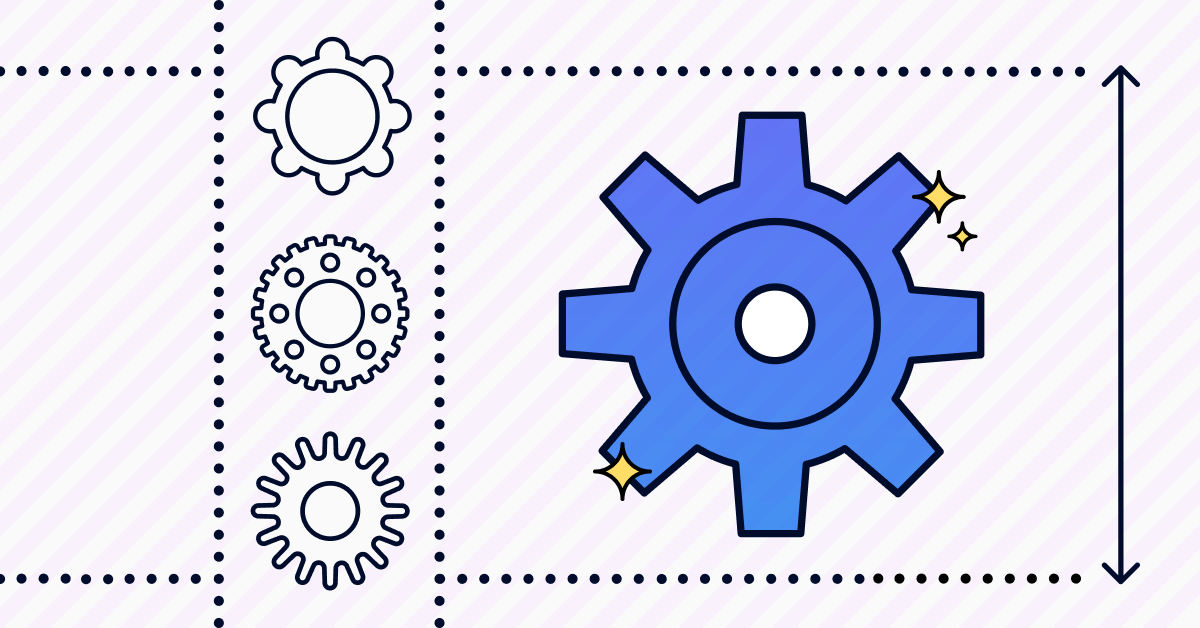Building an Agile Product Roadmap: Tips and Best Practices

What is an Agile Product Roadmap?
Agile product roadmaps are the cornerstone of scaling businesses. Rooted in agile development methodologies, these roadmaps speed up development and time-to-market, leveraging adaptable, clear visual representations of the product’s strategic direction and ideal outcomes.
All roadmaps include or connect to a product’s key goals, features, and milestones over time. But unlike traditional, fixed roadmaps, agile product roadmaps are responsive to changes in demand, market dynamics, and feedback, and account for fluctuations in consumer behavior.
Understanding the Agile Product Roadmap
An agile product roadmap is not designed to be locked down before it’s used, or act as an unalterable plan. Instead, it considers new information, changes in direction, and other evolving circumstances to be an inevitable part of the product development process.
Not Your Traditional Roadmap
Agile product roadmaps are dynamic and adaptive, while traditional roadmaps are usually created at the start of a project, and follow a predetermined timeline with fixed features and release dates. Agile bakes in the ability to pivot based on new information and inputs.
Role in Product Development
The agile product roadmap plays a crucial role in better, faster product development by providing an unfixed, but still strategic, framework for the entire product team and any project partners. By making real-time adaptability and continuous improvement possible, the agile product roadmap helps businesses deliver products that truly meet customer needs and market demand, regardless of when they’re released
The Importance of Agile Product Roadmaps: 3 Ways They Contribute to Success
The visual representation of a roadmap allows all stakeholders, including product managers, developers, and executives, to have a clear understanding of the overall strategic direction of the product.
This form and function is essential for ensuring three critical outcomes:
- Strategic alignment with business goals. By mapping out key features, milestones, and objectives, the agile roadmap serves as a guiding framework that helps teams stay focused on delivering value aligned with the broader business strategy. When agile methodologies are layered on, development efforts are directed towards the most impactful and business-critical aspects of whatever product, feature, or service is in the making.
- Responding to market changes and incorporating customer feedback, which is most effective due to the flexibility of this type of roadmap. Traditional roadmaps struggle to adapt to evolving market conditions, new technologies, or shifting customer preferences. In contrast, the agile roadmap’s form and function are designed to embrace change. It allows teams to adjust priorities, reprioritize features, and even change the product direction based on real-time feedback and insights. This responsiveness ensures that the product remains relevant and competitive.
- Communicating with stakeholders. Agile product roadmaps are highly visual and accessible, serving as a powerful, shared communication tool, visual representation of the product strategy, and outline of the development plan. It helps to align diverse stakeholders, from executives to marketing and sales teams, and creates a common ground for discussions and feedback.
The Agile Product Roadmap: An Overview
Agile is all about thoughtful reactivity, prioritization, and planning. It embodies adaptability, strategic alignment, and effective communication—and the best roadmaps guide teams through the complexities of product development without leaving speed bumps for them down the road.
Key Elements of an Agile Product Roadmap
To support a responsive strategy, a roadmap needs to be a dynamic guide, with a focus on injecting transparency and available feedback into every step. Always include:
- Strategic goals and objectives that provide context and align efforts with the broader business strategy.
- Themes or initiatives that provide a high-level view of the product’s direction and priorities.
- Flexible timelines and release cycles that give an approximate timeframe for when certain features or updates will be delivered.
- Feature overviews that detail specific changes, connect to the overall goals, and that can be translated into actionable tasks for the development team.
- Dependencies and constraints between tasks and features, as well as any constraints (e.g., resource limitations, technology dependencies).
- Metrics and Key Performance Indicators (KPIs) like user engagement, conversion rates, and market share—anything that will help you assess success.
- Feedback and iteration loops that allow the team to adapt based on user feedback, market changes, and internal insights.
- Risk mitigation and management considerations related to technology, market conditions, and other factors that could impact delivery.
- Internal comms plans that outline how and when stakeholders will be informed about progress, changes, and other relevant information.
- A prioritization framework that clearly articulates the criteria for prioritizing features or tasks, making informed decisions possible when faced with conflicting demands or changing priorities.
The Principles and Unique Benefits of Agile Product Roadmaps
Translating the principles of Agile into an actionable plan—complete with detailed tasks and expectations—takes a shift in perspective for product teams accustomed to following standard, static roadmaps.
There will always be overlap in the architecture and application of product roadmaps, but the following benefits are specific to agile:
- Dynamic guidance within the overall development framework, adapting to changes and uncertainties throughout the entire process.
- An evolution-based approach that treats the roadmap as a living document, incorporating emerging insights, market shifts, and customer feedback throughout development.
- Real-time communication, facilitating the fastest, most effective collaboration and transparency between all stakeholders.
Agile frameworks are the original silo-breakers, promoting collaborative communication and improving team effectiveness. By prioritizing customer collaboration, delivering regular product increments that align closely with expectations, and always ensuring high customer satisfaction, it’s a self-improving, cyclical process that delivers additional value with every application.
Understanding the Agile Approach to Product Development
Agile product development prioritizes adaptability, collaboration, and customer feedback. It emphasizes incremental delivery of small, valuable product increments, continuous improvement, and a collaborative, cross-functional team dynamic.
There are several different Agile methodologies—Scrum and Kanban are widely known—and each helps businesses respond quickly to changing needs, improve customer satisfaction, and deliver high-quality products in collaborative environments that shift on a regular basis.
Core Agile Principles and Different Frameworks
There are multiple ways to integrate Agile into product development, and the approach will deeply impact the type of roadmap being built, as well as how it’s used. Here’s a breakdown of various types of Agile methodology:
Scrum is a widely adopted Agile framework characterized by short, time-boxed iterations called sprints. It emphasizes collaboration, regular feedback, and a set of predefined roles (Product Owner, Scrum Master, and Development Team).
Kanban is a visual management method to optimize workflow efficiency. It emphasizes continuous delivery by visualizing work on a Kanban board, limiting work in progress, and focusing on completing tasks before pulling in new ones.
Extreme Programming (XP) emphasizes technical excellence and frequent releases. It includes practices like pair programming, test-driven development (TDD), continuous integration, and regular refactoring.
Lean Software Development aims to eliminate waste, optimize efficiency, and deliver value to the customer. It focuses on value stream mapping, reducing batch sizes, and continuous improvement.
Feature-Driven Development is an iterative and incremental approach that focuses on building features in small, time-boxed iterations. It places a strong emphasis on domain modeling, feature lists, and regular client validation.
Dynamic Systems Development Method (DSDM) provides a set of principles and practices for the development and maintenance of systems, focusing on frequent delivery, collaboration, and feasibility.
Crystal is actually a family of methodologies, each tailored to specific project characteristics. It promotes principles like frequent delivery, reflective improvement, and communication. Different “colors” of Crystal methodologies are designed for different project sizes and complexities.
Adaptive Software Development (ASD) is an iterative and incremental approach that zeros in on collaboration and adaptation through continuous feedback, cooperation among team members, and delivering minimal functionality as early as possible.
Feature-Driven Development (FDD) is an iterative and incremental approach that breaks down complex systems into smaller, well-defined features. It emphasizes domain modeling, iterative progress, and the delivery of tangible, working features.
Scaled Agile Framework (SAFe) is an Agile framework designed for large-scale enterprises. It provides a structured approach to scaling Agile principles and practices across multiple teams, ensuring alignment with organizational goals and efficient collaboration.
The Principles of an Agile Approach
Kaizen means ‘continuous Improvement’, and sits at the heart of Agile’s lean principles. Teams are motivated to seek small, incremental improvements in processes, communication, and collaboration, contributing to ongoing optimization. These principles translate into product development by enhancing customer-centricity, adaptability, and continuous improvement—here’s how it’s done.
- Early and Continuous Delivery
Deliver a minimum viable product (MVP) as early as possible. This enables customers to start realizing value quickly and provides opportunities for their feedback to be incorporated into subsequent iterations.
- Customer Collaboration Over Contract Negotiation
Involve customers in decision-making, gather their feedback, and adapt what’s being done based on their input. The end product will be far more likely to meet their needs and expectations.
- Responsiveness > Planning
Agile recognizes that customer needs can, and will, change over time. By prioritizing flexibility and responsiveness, teams can quickly adjust priorities and features based on changing customer requirements, ensuring that the product remains aligned with customer expectations.
- Embracing Adaptability and Change (Big and Small)
By continuously refining and adjusting the product in response to feedback and evolving requirements, product teams with Agile principles are able to welcome—rather than fear—changes in requirements, even late in development, in order to optimize the product..
- Regular Inspections and Continuous Improvement
Regular inspection points, such as sprint reviews or retrospectives, allow teams to reflect on performance and identify areas for improvement, creating a learning environment where the team can adapt for better efficiency and effectiveness.
- Internal Feedback Loops
Customer feedback matters, but what internal experts think should also influence the development team at every turn. Continuous integration, automated testing, and regular reviews ensure that issues are identified early, and build a culture of continuous improvement.
How to Build an Agile Product Roadmap
While the intricate steps and characteristics of any agile product roadmap will be tailored to the industry and deliverables in question, these five steps provide an umbrella blueprint for success.
-
Define Strategic Goals
Begin by clearly articulating strategic goals and objectives, understanding the overarching vision for your product, its alignment with broader business strategy, and factors such as market trends, customer needs, and the competitive landscape.
-
Identify Product Themes
Group related features, initiatives, or goals into overarching themes representing clusters of functionality or objectives contributing to strategic goals. For example, “Improved User Interface,” “Personalization Features,” or “Enhanced Social Integration.”
-
Prioritize Themes Based on Business Objectives
Prioritize themes according to alignment with business objectives, considering factors like customer impact, revenue potential, market demand, and strategic importance. Collaboratively decide which critical themes to address first in order to maximize overall product strategy impact.
-
Translate Themes into Actionable Tasks
Break down prioritized themes into actionable tasks and milestones, tying specific updates to strategic goals. Ensure that each is small, manageable, and has a clear owner, along with considerations for resources and scheduling.
-
Consistent Reviews and Updates
Evolve the roadmap as feedback and circumstances change. Regularly review and update based on progress, feedback, and insights. Conduct sessions like sprint reviews or strategic planning meetings to evaluate roadmap effectiveness and make adjustments, ensuring alignment with business goals and adaptability to emerging opportunities or challenges.
Putting Your Agile Product Roadmap into Practice: Overcoming Obstacles and Misconceptions
Challenges to internal buy-in have to be met with tailored strategies and best practices. It’s the fastest route to dispelling misconceptions and successfully implementing agile product roadmaps, all while promoting an overall cultural shift that’s more responsive and customer-centric.
Obstacle 1: Resistance to change
A common misconception is that Agile is only suitable for small projects or software development, and isn’t applicable in every industry. This myth has made it fairly common for businesses to resist adopting Agile methodologies. Teams and stakeholders accustomed to traditional development approaches may be unclear of the risk-reward exchange that takes place with the shift in mindset, learning curve, or promise of iterations.
A robust change management plan that includes training sessions for everyone impacted helps educate stakeholders about the benefits, clarify misconceptions, and showcase success stories from organizations that have successfully transitioned.
Obstacle 2: Lack of clear communication (that looks like poor planning)
For lots of companies, “agile” means “no plan.” That’s a byproduct of not adequately communicating both the principles and the processes throughout the business. But rather than presenting agile roadmaps as some form of organized chaos, be clear about purpose, roles, responsibilities, and outcomes, and invite input.
Including a formal communication schedule in your roadmap gives all project partners a method of anticipating and planning for product discussions, which helps alleviate confusion and uncertainty.
Obstacle 3: Overemphasis on tools instead of tactics
Creating an agile product roadmap doesn’t make a company Agile. When teams don’t fully understand the what behind a strategy, it can be especially challenging to get everyone on board with the how (and the why, too). Often, companies adopt agile product roadmaps and development tools without understanding the underlying principles, and that can be an expensive stumbling block. Investing heavily in tools, without addressing the cultural and procedural changes necessary for success, will waste time and budget.
Start with incremental adoption of practices, and begin with smaller teams or projects. This allows for a gradual transition, and lets improvements and outcomes speak for themselves before scaling or disseminating the approach.
Using Productboard to Create More Agile Product Roadmaps
Productboard is a comprehensive platform for product management that aligns seamlessly with core Agile principles. By centralizing product-related information, it facilitates collaboration and transparency, meeting the Agile emphasis on shared understanding and customer-centricity.
Productboard’s prioritization tools help businesses deliver high-value features and outcomes through intuitive visual roadmap planning, effective communication, clear strategic direction, and driving real-time collaboration among diverse stakeholders.
Productboard also deftly accommodates changes and adjustments based on continuous feedback, whether it’s internal or discovered through market research. Key integrations, deep analytics, and robust reporting features support smarter, data-driven decision-making, reflecting Agile principles and supporting the creation of more flexible product roadmaps. Enhanced feedback capabilities also ensure that agile product roadmaps remain responsive to evolving customer needs and market dynamics
Productboard helps leaders in every industry create agile product roadmaps that fuel faster time-to-market, provide better visibility into what customers want, and help businesses deliver relevant, competitive products. Start a free trial today to see how your business can scale with every launch.




